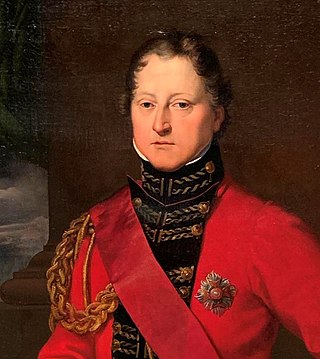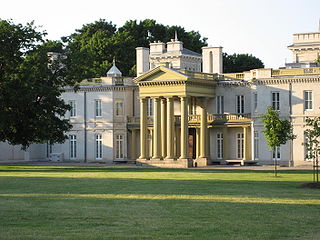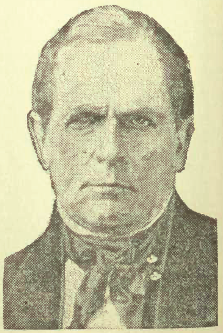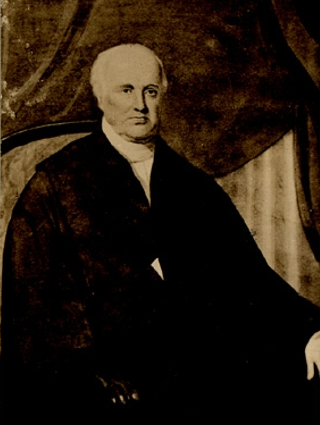Related Research Articles

The War of 1812 was fought by the United States of America and its indigenous allies against the United Kingdom and its own indigenous allies in British North America, with limited participation by Spain in Florida. It began when the United States declared war on 18 June 1812. Although peace terms were agreed upon in the December 1814 Treaty of Ghent, the war did not officially end until the peace treaty was ratified by Congress on 17 February 1815.

The Bloody Assizes were a series of trials started at Winchester on 25 August 1685 in the aftermath of the Battle of Sedgemoor, which ended the Monmouth Rebellion in England.

Ancaster is a historic town in the city of Hamilton, Ontario, Canada, located on the Niagara Escarpment. Founded as a town in 1793, it immediately developed itself into one of the first important and influential early British Upper Canada communities established during the late 18th century eventually amalgamating with the city of Hamilton in 2001. By 1823, due in large part to its easily accessible water power and location at the juncture of prehistoric indigenous trading routes, Ancaster had become Upper Canada's largest industrial and commercial centre. Additionally, Ancaster had at that time attracted the 2nd largest populace (1,681) in Upper Canada trailing only Kingston, but surpassing the populations of nearby Toronto (1,376) and Hamilton (1,000). After this initial period of prosperity beginning in the late 18th century, sudden significant water and rail transportation advancements of the early 19th century would soon better benefit Ancaster's neighbouring towns situated closer to the Lake Ontario waterfront. Stationary steam engines for industries that had rapidly developed in the 19th century would eventually make Ancaster's water-powered industries less vital. As a result, after the 1820s, Ancaster's influence during the remainder of the 19th century would begin to wane.

General Sir Gordon Drummond, GCB was a Canadian-born British Army officer and the first official to command the military and the civil government of Canada. As Lieutenant Governor of Upper Canada, Drummond distinguished himself on the Niagara front in the War of 1812 and later became Governor-General and Administrator of Canada.

William Hull was an American soldier and politician. He fought in the American Revolutionary War and was appointed as Governor of Michigan Territory (1805–13), gaining large land cessions from several American Indian tribes under the Treaty of Detroit (1807). He is most widely remembered, however, as the general in the War of 1812 who surrendered Fort Detroit to the British on August 16, 1812 following the Siege of Detroit. After the battle, he was court-martialed, convicted, and sentenced to death, but he received a pardon from President James Madison and his reputation somewhat recovered.

Dundurn Castle is a historic neoclassical mansion on York Boulevard in Hamilton, Ontario, Canada. The 1,700-square-metre (18,000 sq ft) house took three years and $175,000 to build, and was completed in 1835. The forty-room castle featured the latest conveniences of gas lighting and running water. It is currently owned by the City of Hamilton, which purchased it in 1899 or 1900 for $50,000. The city has spent nearly $3 million renovating the site to make it open to the public. The rooms have been restored to the year 1855 when its owner Sir Allan Napier MacNab, 1st Baronet, was at the height of his career. Costumed interpreters guide visitors through the home, illustrating daily life from the 1850s. Camilla, Queen of Canada, a descendant of Sir Allan MacNab, is the Royal Patron of Dundurn Castle.

The Attorney General of Ontario is the chief legal adviser to His Majesty the King in Right of Ontario and, by extension, the Government of Ontario. The Attorney General is a senior member of the Executive Council of Ontario and oversees the Ministry of the Attorney General – the department responsible for the oversight of the justice system in the province of Ontario. The Attorney General is an elected Member of Provincial Parliament who is appointed by the Lieutenant Governor of Ontario on the constitutional advice of the Premier of Ontario.

Sir William Campbell was Chief Justice of the Supreme Court of Upper Canada and a resident of York, Upper Canada. He also held political appointments in both Nova Scotia and Upper Canada.
Joseph Willcocks sometimes spelt Wilcox was a publisher and political figure in Upper Canada. He was elected to the Parliament of Upper Canada in 1807 representing York, 1st Lincoln and Haldimand. He was re-elected twice and frequently opposed government policies. He became disillusioned with Upper Canada after a military rule was introduced to Upper Canada during the War of 1812 and defected to the United States. He was mortally shot on September 4, 1814 at Fort Erie, and buried in Buffalo, New York.

Sir John Beverley Robinson, 1st Baronet, was a lawyer, judge and political figure in Upper Canada. He was considered the leader of the Family Compact, a group of families which effectively controlled the early government of Upper Canada.

Thomas David Morrison was a doctor and political figure in Upper Canada. He was born in Quebec City around 1796 and worked as a clerk in the medical department of the British Army during the War of 1812. He studied medicine in the United States and returned to York in 1824 to become a doctor in Upper Canada. He treated patients and served on the Toronto Board of Health during the 1832 and 1834 cholera outbreaks and co-founded the York Dispensary. In 1834 he was elected to the 12th Parliament of Upper Canada, representing the third riding of York County as part of the reform movement. That same year he was elected as an alderman to the Toronto City Council and reelected the subsequent two years. In 1836, he served a term as mayor of Toronto.

William Dummer Powell was a Loyalist lawyer, judge and political figure in Upper Canada.
Thomas Scott was a judge and political figure in Upper Canada.
Jamie Crooks was a businessman and political figure in Upper Canada and Canada West.
Thomas Dickson was a businessman and political figure in Upper Canada.

George Rolph was a lawyer and political figure in Upper Canada. He worked in the Hamilton and Ancaster area as a Clerk of the Peace and clerk of the district court. He represented Halton County in the Parliament of Upper Canada.
Colonel Joel Stone (1749–1833) was a United Empire Loyalist and the founder of Gananoque in Ontario, Canada.

By the arrangements of the Canadian federation, Canada's monarchy operates in Ontario as the core of the province's Westminster-style parliamentary democracy. As such, the Crown within Ontario's jurisdiction may be referred to as the Crown in Right of Ontario, His Majesty in Right of Ontario, the King in Right of Ontario, or His Majesty the King in Right of Ontario. The Constitution Act, 1867, leaves many functions in Ontario specifically assigned to the sovereign's viceroy, the lieutenant governor of Ontario, whose direct participation in governance is limited by the constitutional conventions of constitutional monarchy.

Sir William Garrow was an English barrister, politician and judge known for his indirect reform of the advocacy system, which helped usher in the adversarial court system used in most common law nations today. He introduced the phrase "presumed innocent until proven guilty", insisting that defendants' accusers and their evidence be thoroughly tested in court. Born to a priest and his wife in Monken Hadley, then in Middlesex, Garrow was educated at his father's school in the village before being apprenticed to Thomas Southouse, an attorney in Cheapside, which preceded a pupillage with Mr. Crompton, a special pleader. A dedicated student of the law, Garrow frequently observed cases at the Old Bailey; as a result Crompton recommended that he become a solicitor or barrister. Garrow joined Lincoln's Inn in November 1778, and was called to the Bar on 27 November 1783. He quickly established himself as a criminal defence counsel, and in February 1793 was made a King's Counsel by HM Government to prosecute cases involving treason and felonies.
Donald Stockford is a Canadian outlaw biker, gangster and stuntman.
References
- ↑ Martin L. Friedland. Courts and Trials: A Multidisciplinary Approach . University of Toronto Press, Scholarly Publishing Division; 15 December 1975. ISBN 978-1-4875-9728-3. p. 162–.
- ↑ Searching for the Forgotten War - 1812 Canada . Xlibris Corporation; 15 February 2011. ISBN 978-1-4535-8892-5. p. 89–.
- ↑ Daily Lives of Civilians in Wartime Early America: From the Colonial Era to the Civil War . Greenwood Publishing Group; 2007. ISBN 978-0-313-33526-6. p. 106–.
- ↑ Mary Ellen Perkins. Discover Your Heritage: A Guide to Provincial Plaques in Ontario . Dundurn; 30 June 1989. ISBN 978-1-4597-1385-7. p. 83–.
- ↑ "Bloody Assize revisited". Hamilton Spectator, May 17, 2012 by Mark McNeil
- ↑ Vol. XX. Records and Papers of Canadian Historical Society "Archives of Ontario The War of 1812 - Loyalty and Treason". Archives.gov.on.ca. Archived from the original on 2012-08-27. Retrieved 2012-08-26.